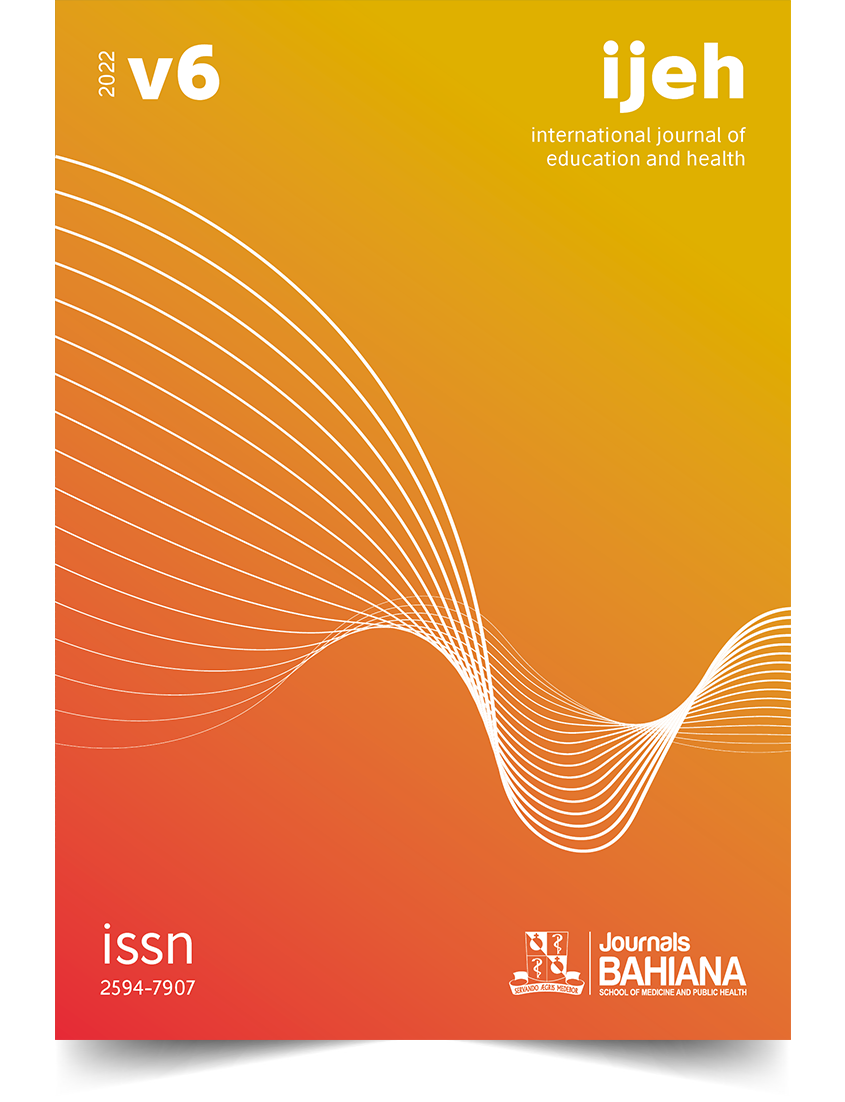Introduction to semiology: construction of clinical history. Reflections of a digital extension course
DOI:
https://doi.org/10.17267/2594-7907ijeh.2022.e3745Keywords:
Medical Education, Semiology, Digital educationAbstract
INTRODUCTION: The clinical interview is an essential procedure in the process of the clinical encounter, of care whenever the doctor behaves with a capacity for respect, interest, authenticity, coherence and empathic understanding. Anamnesis favors the recognition of others, their needs, fears and anxieties. Based on these reflections, we assessed the need to offer an extension course on the construction of anamnesis, in digital format, at the State University of Bahia (UNEB), which addresses issues and which equips students so that they have the necessary knowledge to face the consequences caused by the pandemic COVID-19, and the absence of face-to-face higher education classes in the State of Bahia. OBJECTIVES: To develop a set of knowledge that lead to the sedimentation of the construction of the clinical history (anamnesis) and exploration of the main signs and symptoms. METHODOLOGY: The course was executed entirely on the Google classroomÒ / MeetÒ platform in 09 meetings, from 18/08 to 14/10 2020, with 24 students enrolled and divided into 2 classes of 12 students. The methodology included synchronous activities (theoretical classes and discussions) and asynchronous activities (video lessons available on the platform, support material and activities for home). The theoretical evaluation was performed using the googleforms form, as well as the course evaluation research form. CONCLUSIONS: The evaluation made by the students brought feelings of thanks, enchantment and fulfillment for participating in a course focused on Medical Semiology, as it was the first contact with the Medical Course for some of the students. In view of the results, and the reflection of the teachers, there was a desire to repeat the extension course, especially for newly enrolled students, as they realized the importance of such an activity during this period of uncertainty.
Downloads
References
Soares MOM, Higa EFR, Gomes LF, Marva?o JPQ, Gomes AIF, Gonc?alves AHC. Anamnesis impact to an integrated care: Portuguese students’ view. Rev Bras Promoc? Sau?de. 2016;29(Supl):66-75. https://doi.org/10.5020/18061230.2016.sup.p66
Porto CC. Como fazer uma boa entrevista cli?nica. Rev Med Minas Gerais [Internet]. 2017;26:e-1842. Available from: http://www.rmmg.org/artigo/detalhes/2241
Cardoso GF, Braga SLO, Gotardelo DR. The attention basic care: the potencial of Calgary-Cambridge Model. Braz. J. Surg. Clin. Res [Internet]. 2017;19(1):104-6. Available from: https://pt.scribd.com/document/489925780/Modelo-de-consulta-na-atencao-basica
Resolução Nº 3, de 20 de junho de 2014 (Brasil). Diretrizes Curriculares Nacionais dos Cursos de Graduação em Medicina. [Internet]. Brasília: Ministério da Educação: Conselho Nacional da Educação. 2014 jun. 20. Available from: https://normativasconselhos.mec.gov.br/normativa/view/CNE_RES_CNECESN32014.pdf?query=classificacao
Gorgens PRC, Andrade PCR. Estrate?gias para uso de tecnologias digitais de informac?a?o e comunicac?a?o no ensino me?dico construtivista [Internet]. Anais do Congresso Internacional de Educac?a?o e Tecnologias, Encontro de Pesquisadores em Educac?a?o a Dista?ncia Materiais; 2018; Sa?o Carlos. Available from: https://cietenped.ufscar.br/submissao/index.php/2018/article/view/591
Magalhães AJA, Rocha MHA., Santos SC, Dantas CB, Manso GJMC, Ferreira MA. Digital Technology-Assisted Teaching of Anamnesis during the Covid-19 Pandemic in Brazil. Rev bras educac med. 2020;44(sup.1):e0163. https://doi.org/10.1590/1981-5271v44.supl.1-20200437
Downloads
Published
Issue
Section
License
Copyright (c) 2022 Carolina Bittencourt Moura de Almeida, Daniela Rosa Guimarães Gotardo

This work is licensed under a Creative Commons Attribution 4.0 International License.
This work is licensed under a Creative Commons Attribution 4.0 International License.



